|
|
Creator | Title | Description | Subject | Date |
| 1 |
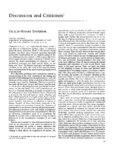 |
Hawkes, Kristen | On life history evolution (a comment on Chisholm) | Chisholm (CA 34:I-24) is right that the theory, models, and data of evolutionary biology apply to questions asked by social scientists. Work in life-history theory (Stearns 1992, Roff 1992, Charnov 1993) has especially provocative implications for the understanding of human development (see review i... | | 1994-01-01 |
| 2 |
 |
Hawkes, Kristen | The derived features of human life history | This chapter compares and contrasts the life histories of extant great apes in order to construct a hypothetical life history of the last common ancestor of all great apes and to identify features of human life history that have been derived during the evolution of our lineage. Data compiled from th... | | 2006-01-01 |
| 3 |
 |
O'Rourke, Dennis H. | Unangan past and present: the contrasts between observed and inferred histories | Abstract Academic research focusing on the population and culture history of the Aleut (Unangan) people began in the late 19th century and continues to the present. The papers in this special issue of Human Biology summarize the latest results from archaeological, linguistic, genetic, and morphometr... | | 2010 |
| 4 |
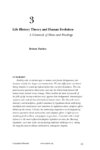 |
Hawkes, Kristen | Life history theory and human evolution : a chronicle of ideas and findings | Fertility ends at similar ages in women and female chimpanzees, but humans usually live longer and mature later. We also differ from our closest living relatives in weaning infants before they can feed themselves. The comparisons pose questions about when and why the distinctively human life history... | | 2006-01-01 |
| 5 |
 |
Kukathas, Chandran | History of political theory and other essays (Book Review) | Reviews the book `The History of Political Theory and Other Essays,' by John Dunn. | Books; Political Theory | 2001-09-17 |
| 6 |
 |
Hawkes, Kristen | Some current ideas about the evolution of the human life history | Human life history is characterised by a long juvenile period (weaning to reproductive maturity), and a long post-reproductive lifespan in females. How do we explain the differences between our nearest relatives, the great apes, and ourselves? This chapter summarises some recent attempts to use l... | Human life history; Fertility; Apes; Juvenile period | 1999 |
| 7 |
 |
Hawkes, Kristen | Grandmothers and their consequences | Both what we share and don't share with our primate cousins make us human. Easy enough to start a list. At least since Darwin, most would rate moral sentiments as distinctively human. But our modern selves didn't emerge from ancestral apes in one step. When did populations along the way become human... | | 2012-01-01 |
| 8 |
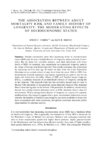 |
Smith, Ken R. | The association between adult mortality risk and family history of longevity: the moderating effects of socioeconomic status | Studies consistently show that increasing levels of socioeconomic status (SES) and having a familial history of longevity reduce the risk of mortality. But do these two variables interact, such that individuals with lower levels of SES, for example, may experience an attenuated longevity penalty by ... | | 2014-01-01 |
| 9 |
 |
Nicoll, Kathleen | The climate and environment of Byzantine Anatolia: Integrating science, history, and archaeology | This article, which is part of a larger project, examines cases in which high-resolution archaeological, textual, and environmental data can be integrated with longer-term, low-resolution data to afford greater precision in identifying some of the causal relationships underlying societal change. | | 2014-01-01 |
| 10 |
 |
Hawkes, Kristen | Human life histories: primate trade-offs, grandmothering socioecology, and the fossil record | Human life histories differ from those of other animals in several striking ways. Recently Smith and Tompkins (1995, p. 258) highlighted the combination of "slow" and "fast" features of human lives. Our period of juvenile dependency is unusually long, our age at first reproduction is late, and we h... | Meat; Maturity; Life Span | 2003 |
| 11 |
 |
Maloney, Thomas N. | Higher places in the industrial machinery?: tight labor markets and occupational advancement by black males in the 1910s | The economic history of African American workers since 1940 has been marked by alternating episodes of progress and stagnation. Sharp gains in relative incomes during the 1940s were followed by little change in this measure in the 1950s. Renewed progress from the mid-1960s to the mid-1970s was follo... | Black people; Job opportunities; Labor market | 2005 |
| 12 |
 |
Maloney, Thomas N. | Living standards in black and white: evidence from the heights of Ohio prison inmates, 1829-1913 | The use of height data to measure living standards is now a well-established method in the economic history literature. Moreover, a number of core findings are widely agreed upon. There are still some populations, places, and times, however, for which anthropometric evidence remains limited. One su... | Stature, Inequality, Nineteenth century US race relations | 2008-07 |
| 13 |
 |
Mineau, Geraldine Page | Estimating recurrence of spontaneous preterm delivery | To identify factors associated with spontaneous preterm birth and to estimate the risk of its recurrence for the second through fourth births among women in Utah who had a first and any subsequent birth between 1989 and 2001, using a retrospective cohort study design. | Spontaneous preterm delivery | 2008 |
| 14 |
 |
Maloney, Thomas N. | Ghettos and jobs in history: neighborhood effects on African American occupational status and mobility in World War I-era Cincinnati, Ohio | This article examines how residence in racially segregated neighborhoods affected the job prospects of African American men in the late 1910s. The analysis focuses on one northern city-Cincinnati, Ohio.The evidence comes from a new longitudinal dataset containing information on individuals linked... | Economic outcomes; Residential segregation; Black urban neighborhoods | 2005 |
| 15 |
 |
Mineau, Geraldine Page; Bean, Lee Lawrence | Intergenerational transmission of relative fertility and life course patterns | In many countries fertility trends over the last century have been characterized by sustained declines and the dissemination of a relatively sophisticated contraceptive knowledge. Many possible avenues for the dissemination of such knowledge exist among contemporary populations. There has, however,... | Relative fertility; Intergenerational transmission | 1987 |
| 16 |
 |
Rogers, Alan R. | Pleistocene population X-plosion? | In two recent papers, Kaessmann et al. presented DNA sequence data from the X chromosome (Xq13.3) of 30 chimpanzees and 69 humans (Kaessmann et al. 1999a; Kaessmann et al. 1999b). These data bear on two longstanding questions involving late Pleistocene demographic history: (1) whether the long-term... | | 2000 |
| 17 |
 |
Maloney, Thomas N. | Degrees of inequality: the advance of black male workers in the northern meat packing and steel industries before World War II | Recent major works on long-term racial inequality in the labor market revolve around competing hypotheses concerning the importance of human capital factors (Smith and Welch 1989) and government policy (Donohue and Heckman 1991) in promoting black advance. There is however, another line or thinking ... | Labor markets; Northern employers; Racial inequality | 1995 |
| 18 |
 |
Smith, Ken R. | Familial effects of BRCA1 genetic mutation testing: changes in perceived family functioning | This study expands recent research that examines how the receipt of BRCA1 genetic test results affects family adaptability and cohesion 1 year after genetic risknotification. Study participants were members of a large Utah-based kindred with an identified mutation at the BRCA1 locus. The final samp... | Genetic testing; Families; Risk notification: BRCA1 | 2007 |
| 19 |
 |
O'Rourke, Dennis H. | South from Alaska: a pilot aDNA study of genetic history on the Alaska Peninsula and the Eastern Aleutians | Abstract The Aleutian Islands were colonized, perhaps several times, from the Alaskan mainland. Earlier work documented transitions in the relative frequencies of mtDNA haplogroups over time, but little is known about potential source populations for prehistoric Aleut migrants. As part of a pilot i... | | 2010 |
| 20 |
 |
Harpending, Henry C. | Paternal age and genetic load | The incidence of base substitutions in humans increases with the age of the father, which shows up as an increased incidence of mutational disorders in the children of older fathers. There is a less obvious implication: an extended period of high average paternal age in a population will lead to inc... | | 2013-01-01 |
| 21 |
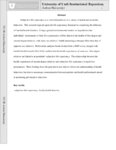 |
Zick, Cathleen D. | Family, frailty, and fatal futures? Own-health and family-health predictors of subjective life expectancy | Subjective life expectancy is a powerful predictor of a variety of health and economic behaviors. This research expands upon the life expectancy literature by examining the influence of familial health histories. Using a genetic/environmental model, we hypothesize that individuals' assessments of th... | | 2014-01-01 |
| 22 |
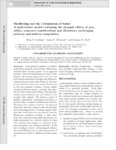 |
Codding, Brian | Shellfishing and the colonization of sahul: a multivariate model evaluating the dynamic effects of prey utility, transport considerations and life-history on foraging patterns and midden composition | Archaeological evidence of shellfish exploitation along the coast of Sahul (Pleistocene Australia-New Guinea) points to an apparent paradox. While the continental record as a whole suggests that human populations were very low from initial colonization through early Holocene, coastal and peri-c... | | 2014-01-01 |
| 23 |
 |
Maloney, Thomas N. | Occupation and fertility on the frontier: Evidence from the state of Utah | BACKGROUND Most of what we know about fertility decline in the United States comes from aggregate (often state or county level) data sources. It is difficult to identify variation in fertility change across socio-economic classes in such data, although understanding such variation would provide deep... | | 2014-01-01 |
| 24 |
 |
Smith, Ken R. | Fertility and post-reproductive longevity | We examine the effects of reproduction on longevity among mothers and fathers after age 60. This study is motivated by evolutionary theories of aging and theories predicting social benefits and costs of children to older parents. We use the Utah Population Database, that includes a large genealogic... | Fertility; Post-reproductiivity; Longevity | 2002 |
| 25 |
 |
Stroup, Antoinette M.; Smith, Ken R. | Familial effects of BRCA1 genetic mutation testing: changes in perceived family functions | This study expands recent research that examines how the receipt of BRCA1 genetic test results affects family adaptability and cohesion one year after genetic risk notification. Study participants were members of a large Utah-based kindred with an identified mutation at the BRCA1 locus. The final sa... | Family functioning; Family cohesion; Family adaptability; Genetic testing; BRCA1 | 2006-07-27 |

























